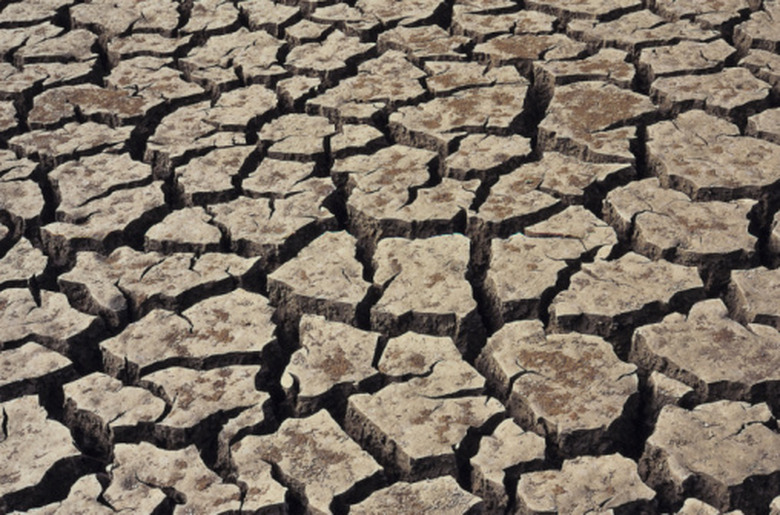Why Does Clay Absorb More Water Than Top Soil?
The ability of a substance to absorb water depends on its permeability and surface area. A highly permeable substance such as sand will allow a lot of water to enter into it, but since it has a low surface area it will not absorb as much water. Increased surface area in soil depends on the amount of clay in the soil and soil aggregation.
Texture
Soil texture is the percentage of sand, silt and clay found in it. Texture determination comes from the fine earth fraction of the soil, which includes all materials smaller than about 1/4 inch. This excludes all materials larger than very coarse sand. The fine earth fraction is divided into three size classes starting with sand then silt and finally clay, the finest of the materials in the soil. The finer the soil texture the more water it can absorb.
Clay
Clay in the soil is microscopic and can be an arrangement of only a few atoms. Because clay is so small, large amounts of clay together create lots of tiny in-between spaces. Since larger soil particles such as sand are solid, the total volume of space between them is less than the volume of the space between an equal amount of clay particles. The increased amount of spaces between clay particles creates abundant surface area on which water molecules can adhere. Clay has the greatest ability of mineral materials in the soil to absorb water because of its tremendous surface area.
Top Soil
The surface of a soil is where most nutrients and organism are found. Top soil is composed of lots of organic matter in various stages of decay. Organic matter is the material left behind by plants and animals. It also includes secretions from the roots of plants. Organic matter can absorb and hold lots of water but even in fertile soils there is only a small percentage of water-holding organic matter in the soil, especially when compared to the amount of clay in the soil. Top soil is typically very permeable because it is constantly being puncutured by roots and traversed by organisms such as worms. Water drains quickly through top soil but much more of it is absorbed by layers of clay found deeper in the soil.
Water Holding Capacity
The capacity of the soil to hold water against the pull of gravity is called its water holding capacity. Because clay is so fine and has such a high surface area per unit of volume it can absorb huge amounts of water. Top soil may contain organic matter that can absorb water but the surface soil has more large pores and holes than it does microscopic ones. To hold more water a soil needs fine materials which create tiny spaces for water to cling to. Clay is a much finer material than top soil and thus has a higher water-holding capacity.
